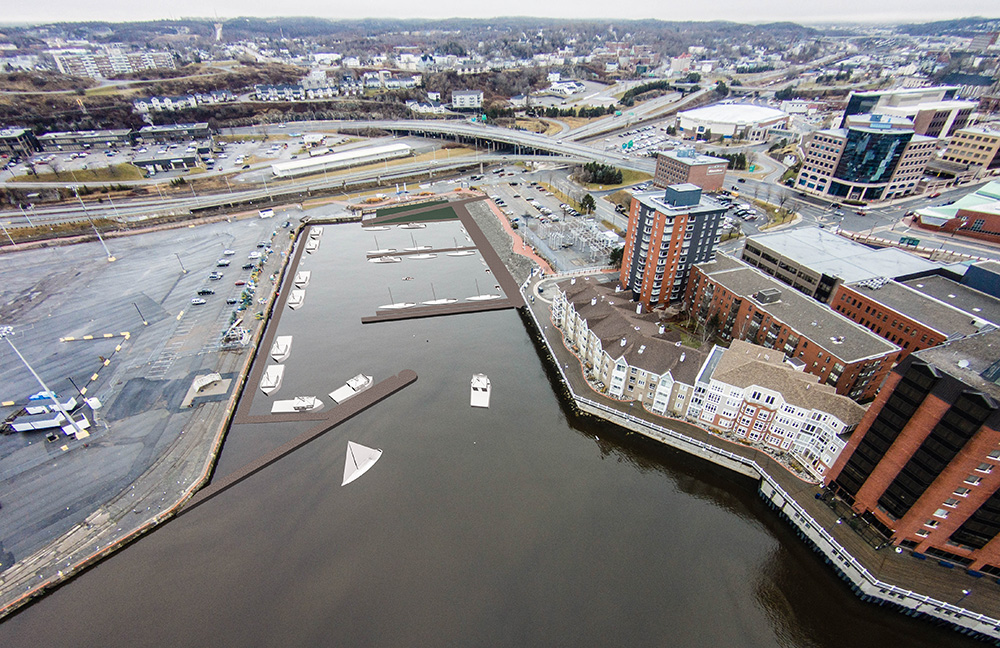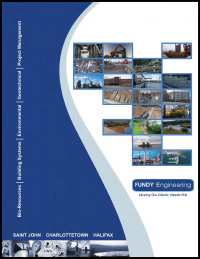Fostering A MultiDisciplinary Approach Since 1989
By Rajitha Sivakumaran
In 1989, when engineers Gordon Mouland and Peter McKelvey began Fundy Engineering, it was at a time when their home base of Saint John, New Brunswick was overstocked with engineering firms. Having left their full-time jobs, the success of the company became pivotal, especially since their young families were depending on them. But the thirst to create something independent and craft a business philosophy based on fulfilling customer needs prevailed over the uncertainties and fears that often accompany new entrepreneurs.
Nearly three decades later, Fundy Engineering has grown into an award-winning company with offices in New Brunswick, Prince Edward Island and Nova Scotia. Starting with a team of only three people, the firm now has a rising, committed workforce of 10 times the original number. So what is the secret behind the company’s success? How did the firm distinguish itself in an ocean of fish?
Instrumental to its success was the fact that there were only single-faceted engineering firms in Saint John at the time. Every firm specialized in only a specific aspect of engineering. If you needed a structural engineer, there would be a firm stockpiled with structural engineers. But what if you needed various types of engineers for a project? Fundy Engineering emerged as the first multidisciplinary firm in the city, specializing in mechanical, environmental, geotechnical and more, and that has paved the path for growth and success.
“We are a small market. Having more than one discipline helps smooth out the rocky road of the engineering consulting business. Working in different markets, hills and valleys are not quite as steep,” said Mouland, who now serves as the firm’s president. Fundy is now one of the largest employee-owned, multidisciplinary firms in Saint John, but there’s more to this success story than service diversity. Customer care, staying on top of trends and a happy workforce are three additional ingredients.
“One of our overriding values is that we are serving our clients’ needs first. It’s only a few words, but it means a lot to us,” Mouland said. Consulting engineering is a business like any other, but Mouland’s firm uses a client-focused philosophy to offer professional, cost-effective solutions.
“The third leg on the stool is to make sure we have a motivated, happy workforce. We are our people. The success we’ve had and the success that we hope to have, it’s basically because of the people that we have who are doing the day-to-day work and I can’t say enough about how important that is,” Mouland said. “When there’s half a dozen people, it’s easy to have an office culture that’s good to work in, but as you grow you have to be very mindful to try and keep that and it’s not easy.” But the company has done a good job maintaining its original office culture; in 2007, Fundy was recognized as one of best places to work in Atlantic Canada by Best Companies Group and Progress Magazine.
Contrary to the smooth sailing so far, the sea has become rather rough in recent times. Budgets are tight and this challenge persists from homeowners all the way up to government agencies. But Mouland has put a positive spin on the situation, saying, “For every challenge, there is usually an opportunity, because if somebody has a challenge they have a problem.” And Fundy is rather good at offering solutions.
Noteworthy operations and substantial contributions
The last three decades have filled Fundy’s project portfolio with noteworthy operations and substantial contributions to the Atlantic Canada and New England area. The firm has been involved in everything from long-term environmental monitoring to forensic investigations.
Despite having fingers in various pies, Fundy does have a favourite: geotechnical engineering, a sub-discipline that deals with structures that are either constructed or supported by soil or rock, such as slopes and wharves. Digby, Nova Scotia is highly dependent on the harbour, which provides a link to the sea-based fishery and aquaculture operations. In 2007, Fundy Engineering conducted a comprehensive geotechnical investigation and wharf condition survey to document the existing conditions of the wharf infrastructure. Fundy provided the Digby Harbour Authority with design recommendations based on the needs of the user and community with respect to the harbour. Recommendations included new floats, gangways and new lighting.
A major component of the design was a new 300-metre-long breakwater. Because of the poor soil conditions in the area that were revealed during the borehole investigation, the design had to be altered. A traditional armour stone breakwater was constructed to a +1.5 metre elevation for the main section of the breakwater. That section was then finished with a wooden crib component filled with ballast rock to provide maximum protection at high tide and have acceptable slope stability.
The East Coast is home to Canada’s only Canaport liquefied natural gas (LNG) regasification terminal. The hazard with building and housing a structure like this is the large environmental footprint it leaves. In addition to obtaining the environment permits for the project, Fundy worked with the community to identify and reduce these impacts — an industrial project essentially became a community project. The environmental aspect of the project brought with it some fairly unique operations.
Lobster fishers became worried that lost fishing gear would rise in number as water traffic increased due to the presence of the LNG facility. “The thing about lost fishing gear is that long after they’re lost, they continue to fish,” Mouland explained. “There is no economic gain for the fishermen because they don’t bring the traps up, but they still trap lobsters and the lobsters end up dying in the traps.” Furthermore, when construction of the LNG facility began, 2,445 square metres of the seafloor was disrupted. Consequently, Canaport LNG initiated the Derelict Lobster Trap Retrieval Project. Using side scan sonar, 540 lost traps were removed, some of which were over two decades old.
In more recent times, Fundy has been involved with the design of a community harbour at Long Wharf, which is home to a large federal harbour that houses big ships and other ocean-going vessels. “Our fishermen have been fishing there for centuries, but didn’t really have a designated harbour,” Mouland said. Working with various industries like marine and tourism, the design phase has been completed and construction is eagerly anticipated.
www.fundyeng.com







